Educational Symposium offers more than 40 hours of Educational Programing during NCLC
:dropcap_open:I:dropcap_close:n March, after new and returning members of the 113th Congress settle into their offices on Capitol Hill, chiropractic physicians and students from around the country will come to Washington, D.C. to provide the profession’s perspective on the important health care issues facing our nation.

This face time with legislators will take place March 6-10 as part of the 2013 National Chiropractic Legislative Conference (NCLC) and Education Symposium, hosted by the American Chiropractic Association (ACA), with the Chiropractic Summit serving as a partnering organization for the event.
The theme of this year’s conference, “Framing the Future of Chiropractic,” will focus on a big picture view of the future for the chiropractic profession, and on setting the stage for its advancement during this pivotal time for health care in the United States.
NCLC is the profession’s chance to weigh in on, among other issues, the ongoing implementation of the Patient Protection and Affordable Care Act (PPACA), further expansion of chiropractic services in the Department of Defense (DoD) and Department of Veterans Affairs (VA), federal student loan relief for chiropractic students and getting doctors of chiropractic (DCs) commissioned in the U.S. Public Health Service (USPHS) Commissioned Corps.
“The month of March after an election year is the perfect time for this kind of advocacy work with legislators,” said ACA President Keith Overland, DC. “The Congressional season is young, and the newly elected lawmakers will be excited about their new jobs. We need to strike while the iron is hot, so I urge every chiropractic ally that can to come to NCLC on behalf of the profession and our patients.”
NCLC is the chiropractic profession’s most important public policy and educational event. For more than 30 years, chiropractic physicians and chiropractic students from across the country have gathered in Washington, D.C. annually to meet with members of Congress and discuss the issues that matter most to DCs and their patients. In addition to the advocacy on Capitol Hill, NCLC offers education opportunities and information about important federal initiatives.
Over the years, a list of political dignitaries and pundits have appeared at NCLC, including political strategist and CNN contributor Paul Begala; political pundit and Daily Caller owner Tucker Carlson; political strategist and media personality James Carville; Ret. Brig. Gen. Becky Halstead, spokesperson for the Foundation for Chiropractic Progress; Howard Wasdin, DC, author of Seal Team Six: Memoirs of an Elite Navy Seal Sniper; and perennial chiropractic supporters such as Sens. Tom Harkin (D-Iowa), Orrin Hatch (R-Utah) and Charles Grassley (R-Iowa); and Reps. Mike Rogers (R-Alaska) and James Clyburn (D-South Carolina).
Key Issues for Chiropractic on the Hill

Following a much-anticipated U.S. Supreme Court ruling that found the health care reform law to be constitutional, full implementation of PPACA is underway. NCLC attendees will be talking with legislators about how the services provided by doctors of chiropractic are cost effective and about how DCs can help fill the primary care workforce gap. Many lawmakers are still unaware that the chiropractic health care model has always been heavily focused on providing essential services and promoting healthy lifestyles for the prevention of disease and injury.
Aside from health care reform, at NCLC doctors and lawmakers will talk about other pressing legislative issues, such as:
- Expanding access to the services provided by doctors of chiropractic for members of the military and military veterans. With ACA’s support, key bills related to this issue have been introduced in Congress in order to require the VA to have a DC on staff at all major medical facilities and to extend the services provided by doctors of chiropractic to U.S. military retirees, dependents and survivors as part of TRICARE, the DoD health care delivery system.
- Legislation that would include DCs in the U.S. Public Health Service (USPHS) Commissioned Corps—a team of health professionals that promote public health and provide disease prevention programs and health care services across the country.
- A bill that would provide opportunities for DCs to work in exchange for student loan relief while ensuring that medically underserved communities across America have access to a wide array of health care services and an expanded range of providers.
“Introducing pro-chiropractic legislation is only a part of the battle,” said John Falardeau, ACA’s senior vice president of government relations. “The next step in getting these bills passed is to generate support for the legislation among members of Congress; and the best way to do that is to come to Washington for NCLC and tell your lawmakers in person why these issues matter to you and your patients.”
Chiropractic Summit and ABCA to Meet

The Chiropractic Summit—an initiative to unite the profession that includes 41 organizations, including ACA, the Association of Chiropractic Colleges, the Congress of Chiropractic State Associations and the International Chiropractors Association—will meet during the first day of NCLC-related activity, on Wednesday, March 6. Additionally, for the first time, the American Black Chiropractic Association (ABCA) will host a meeting in conjunction with the event.
Network with Colleagues, Lawmakers and Attend Hours of Educational Programming
As always, opportunities to network with colleagues—and elected officials—will be abundant during NCLC. The annual congressional reception (an attendee favorite) will be held again this year. Previous congressional representatives in attendance include: Rep. Howard Coble (R-North Carolina), Sen. Richard Blumenthal (D-Connecticut), Rep. Walter Jones (R-North Carolina) and Former House Speaker Rep. Nancy Pelosi (D-California).
Finally, ACA’s Second Annual Educational Symposium will take place March 8-10. Participants can attend more than 40 hours of educational programming. Featured topics include:
- Chiropractic Integration into Health Care
- Balance Disorders
- DOT Marketing
- Chiropractic Management of Otitis Media
- Managing Sports Injuries of the Shoulder
- Practice Management
- Acupuncture and Chiropractic Practice
- Laser Spine Institute
- Upper Cervical Oddities
- Recognizing and Managing Osteoporosis
- Chiropractic: Changing the Face of Sports Performance
- Marketing through Internet & Social Media
- Ankle Gait and Station
- Managing the Geriatric Patient
- How to Maximize Your ACA Partnership
- Nutraceutical and Lifestyle Management of Hypertension
- Rehabilitation of the Knee
- Understanding Low Level Laser Therapy
- Endocrine Disruptors
- Advanced Extremity Adjusting
- Preparing Your Office for Medicare Audits
- Failure to Recognize the Presence & Implications of Vascular Conditions in Clinical Practice
It can’t be stated often or strongly enough. This is a pivotal time for chiropractic physicians and health care in general in this country. So now, more than ever, Congress needs to hear the message from DCs in their districts and states. The chiropractic profession has been on the path of prevention and wellness for more than a century, and it’s time for the rest of the country to follow suit. NCLC is the chiropractic profession’s opportunity to tell its story to elected officials and to make them aware of just how much it has to offer.
Melissa Lee is the American Chiropractic Association’s public and media relations manager. She has spent her entire career working with media on behalf of professional associations. Melissa promotes chiropractic services to patients in need by coordinating media interviews with chiropractic spokespeople—providing a voice for the profession in consumer media.


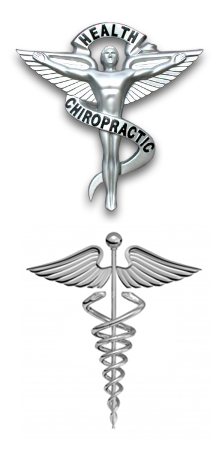
 The meeting ended with a formal request for names of the chiropractors present and their locations to spur referrals and collaboration. The meeting was so well received that a subsequent invitation was discussed among three different chapters of the organization meeting in Syracuse, New York. The highlight of the evening was when the vice president of the AAFP said, “I wonder why chiropractors and family physicians don’t work more together. We are both focused on the conservative treatment of our patients without the use of drugs or surgery unless absolutely necessary.” According to Dr. Owens, “In the end, we were all more alike than we were different and we discovered that we can work together in the best interests of patients without any of us changing our philosophy. We don’t have to become like each other to work together.”
The meeting ended with a formal request for names of the chiropractors present and their locations to spur referrals and collaboration. The meeting was so well received that a subsequent invitation was discussed among three different chapters of the organization meeting in Syracuse, New York. The highlight of the evening was when the vice president of the AAFP said, “I wonder why chiropractors and family physicians don’t work more together. We are both focused on the conservative treatment of our patients without the use of drugs or surgery unless absolutely necessary.” According to Dr. Owens, “In the end, we were all more alike than we were different and we discovered that we can work together in the best interests of patients without any of us changing our philosophy. We don’t have to become like each other to work together.”
 Arlington, Va.–The American Chiropractic Association’s (ACA) House of Delegates (HOD) approved a new statement outlining what the association hopes to achieve over the next 10 years on behalf of the chiropractic profession and its patients. With an eye toward the future, delegates, who met March 8-9 in Washington, D.C., also passed resolutions to advance education and leadership development in their ranks.
Arlington, Va.–The American Chiropractic Association’s (ACA) House of Delegates (HOD) approved a new statement outlining what the association hopes to achieve over the next 10 years on behalf of the chiropractic profession and its patients. With an eye toward the future, delegates, who met March 8-9 in Washington, D.C., also passed resolutions to advance education and leadership development in their ranks.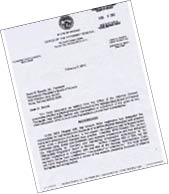
 Earlier this year, David Rovetti, D.C., president of the Chiropractic Physicians Board of Nevada requested an opinion on behalf of the office of the Attorney General of Nevada, concerning whether a licensed physical therapist may lawfully perform manipulation or adjusting of the spine, or any articulation.
Earlier this year, David Rovetti, D.C., president of the Chiropractic Physicians Board of Nevada requested an opinion on behalf of the office of the Attorney General of Nevada, concerning whether a licensed physical therapist may lawfully perform manipulation or adjusting of the spine, or any articulation. 
 “We are delighted Dr. McDonald has accepted our invitation to join Logan College as President,” said Steven Roberts, Chair of the Logan Board of Trustees. “Our board, with input from students, faculty, administrators and alumni, conducted a thorough search and reviewed many outstanding candidates for the position. Dr. McDonald is uniquely suited to continue Logan’s outstanding leadership position in the field of chiropractic education.”
“We are delighted Dr. McDonald has accepted our invitation to join Logan College as President,” said Steven Roberts, Chair of the Logan Board of Trustees. “Our board, with input from students, faculty, administrators and alumni, conducted a thorough search and reviewed many outstanding candidates for the position. Dr. McDonald is uniquely suited to continue Logan’s outstanding leadership position in the field of chiropractic education.” 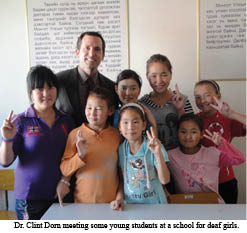
 Dr. Clint Dorn, D.C., is planning on promoting chiropractic in a big way next year. Dr. Dorn is leading a delegation of chiropractors to India next summer. The group will tour medical facilities in Delhi, Jaipur and Agra, India, from August 25-September 2, 2013. Dorn became involved in a citizen ambassador program in 2009, through a government agency called People to People. He traveled to China as part of a mixed medical delegation to meet medical professionals of that country, exchange information and take some time to enjoy the country’s rich cultural history.
Dr. Clint Dorn, D.C., is planning on promoting chiropractic in a big way next year. Dr. Dorn is leading a delegation of chiropractors to India next summer. The group will tour medical facilities in Delhi, Jaipur and Agra, India, from August 25-September 2, 2013. Dorn became involved in a citizen ambassador program in 2009, through a government agency called People to People. He traveled to China as part of a mixed medical delegation to meet medical professionals of that country, exchange information and take some time to enjoy the country’s rich cultural history.  “The response I received in 2009 as the delegation’s only chiropractor was pretty exciting. I remember thinking what a bigger impact we could make if we had more chiropractors on the trip,” Dorn said.
“The response I received in 2009 as the delegation’s only chiropractor was pretty exciting. I remember thinking what a bigger impact we could make if we had more chiropractors on the trip,” Dorn said. 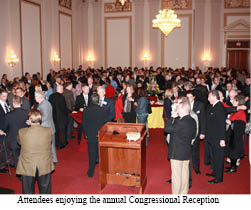
 This face time with legislators will take place March 6-10 as part of the 2013 National Chiropractic Legislative Conference (NCLC) and Education Symposium, hosted by the American Chiropractic Association (ACA), with the Chiropractic Summit serving as a partnering organization for the event.
This face time with legislators will take place March 6-10 as part of the 2013 National Chiropractic Legislative Conference (NCLC) and Education Symposium, hosted by the American Chiropractic Association (ACA), with the Chiropractic Summit serving as a partnering organization for the event. Following a much-anticipated U.S. Supreme Court ruling that found the health care reform law to be constitutional, full implementation of PPACA is underway. NCLC attendees will be talking with legislators about how the services provided by doctors of chiropractic are cost effective and about how DCs can help fill the primary care workforce gap. Many lawmakers are still unaware that the chiropractic health care model has always been heavily focused on providing essential services and promoting healthy lifestyles for the prevention of disease and injury.
Following a much-anticipated U.S. Supreme Court ruling that found the health care reform law to be constitutional, full implementation of PPACA is underway. NCLC attendees will be talking with legislators about how the services provided by doctors of chiropractic are cost effective and about how DCs can help fill the primary care workforce gap. Many lawmakers are still unaware that the chiropractic health care model has always been heavily focused on providing essential services and promoting healthy lifestyles for the prevention of disease and injury. The Chiropractic Summit—an initiative to unite the profession that includes 41 organizations, including ACA, the Association of Chiropractic Colleges, the Congress of Chiropractic State Associations and the International Chiropractors Association—will meet during the first day of NCLC-related activity, on Wednesday, March 6. Additionally, for the first time, the American Black Chiropractic Association (ABCA) will host a meeting in conjunction with the event.
The Chiropractic Summit—an initiative to unite the profession that includes 41 organizations, including ACA, the Association of Chiropractic Colleges, the Congress of Chiropractic State Associations and the International Chiropractors Association—will meet during the first day of NCLC-related activity, on Wednesday, March 6. Additionally, for the first time, the American Black Chiropractic Association (ABCA) will host a meeting in conjunction with the event.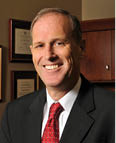
 “The presidential search committee and Board of Trustees felt that Dr. McAulay was the best choice to lead Parker into the future,” said Dr. Lassiter. “In the search for a new president, the search committee was mindful of the expansion in the role and mission of the institution as a university. In that regard, Dr. McAulay has a PhD in business and management, the doctor of chiropractic degree, and further professional education at the Harvard University Institute for Educational Management, and was awarded a post-doctoral fellowship in educational administration by the American Council on Education. In addition, a noteworthy aspect of his professional experience is service as a chiropractic department chair and teaching experience in business and management at Philadelphia University and Temple University.”
“The presidential search committee and Board of Trustees felt that Dr. McAulay was the best choice to lead Parker into the future,” said Dr. Lassiter. “In the search for a new president, the search committee was mindful of the expansion in the role and mission of the institution as a university. In that regard, Dr. McAulay has a PhD in business and management, the doctor of chiropractic degree, and further professional education at the Harvard University Institute for Educational Management, and was awarded a post-doctoral fellowship in educational administration by the American Council on Education. In addition, a noteworthy aspect of his professional experience is service as a chiropractic department chair and teaching experience in business and management at Philadelphia University and Temple University.”
 Last year, Parker University developed a strategic plan that called for the introduction of twelve new allied health programs by 2017. The first three degree programs, slated for introduction in January 2013, include an associate’s degree in Radiological Technology, a bachelor’s degree in Health Information Management and a master’s degree in Business Administration with a Concentration in Health Care. All three degrees were carefully selected for introduction based on criteria including how well they support and complement chiropractic, the job forecasts for each degree program and the higher than average expected salaries for each profession these degrees serve.
Last year, Parker University developed a strategic plan that called for the introduction of twelve new allied health programs by 2017. The first three degree programs, slated for introduction in January 2013, include an associate’s degree in Radiological Technology, a bachelor’s degree in Health Information Management and a master’s degree in Business Administration with a Concentration in Health Care. All three degrees were carefully selected for introduction based on criteria including how well they support and complement chiropractic, the job forecasts for each degree program and the higher than average expected salaries for each profession these degrees serve.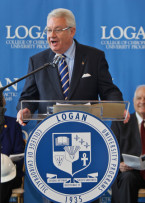
 (ST. LOUIS) – Logan College of Chiropractic/University Programs President George Goodman, D.C. announced today that he will retire as President by March 31, 2013. Dr. Goodman has led Logan for two decades and is responsible for growing enrollment, expanding programs and establishing an endowment and investment base of more than $25 million.
(ST. LOUIS) – Logan College of Chiropractic/University Programs President George Goodman, D.C. announced today that he will retire as President by March 31, 2013. Dr. Goodman has led Logan for two decades and is responsible for growing enrollment, expanding programs and establishing an endowment and investment base of more than $25 million.